The Economics and Statistics Division maintains archives of previous publications for accountability purposes, but makes no updates to keep these documents current with the latest data revisions from Statistics Canada. As a result, information in older documents may not be accurate. Please exercise caution when referring to older documents. For the latest information and historical data, please contact the individual listed to the right.
<--- Return to Archive
For additional information relating to this article, please contact:
June 27, 2022STUDY: IMMIGRATION AS A SOURCE OF LABOUR SUPPLY Statistics Canada recently released a presentation, “Research to Insights: Immigration as a Source of Labour Supply”. The presentation incorporated evidence from many different studies that use innovative and high-quality data and methods to better understand relevant and complex policy issues. It includes insights from research to examine the contribution of immigration in addressing labour market supply challenges over the past decades which will help to understand current labour market shortages and the potential role of immigrants to fill current gaps.
Immigration has been the driving force of Canada’s labour supply for many years. In 2010, 84% of the Canada’s labour force growth came from immigration. In 2021, 405,800 immigrants entered in Canada, the highest level in history, following interruption due to COVID-19 in 2020.
In upcoming years all classes expected to grow to higher level through 2024. Refugees share has been increasing since 2016.
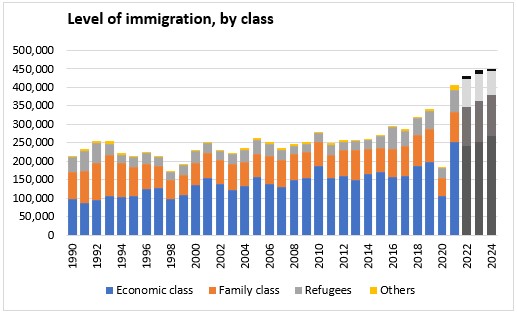
In the 2010s, immigrant workers accounted for 84% of labour force growth, including 55% of growth in high- and medium skilled jobs and offsetting the decline in low-skilled jobs among Canadian-born workers.
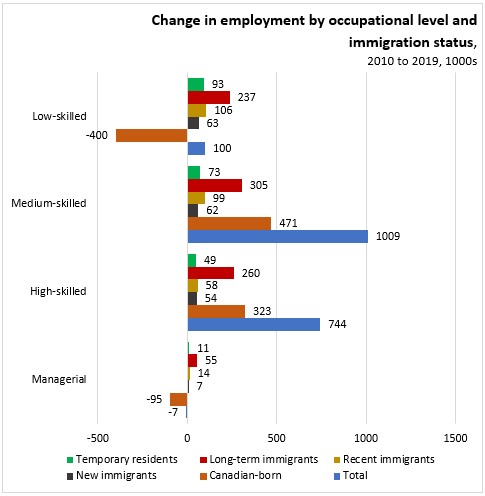
Growth in high skilled jobs offset the decline in other jobs from 2019 to 2021.
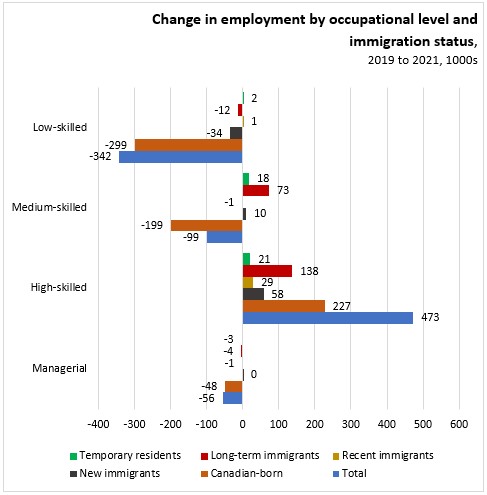
The share of new and recent immigrants grew fastest in transportation and warehousing, professional services and accommodation and food services since 2010. The share of immigrants was largely unchanged in public administration and rose in health and education services.
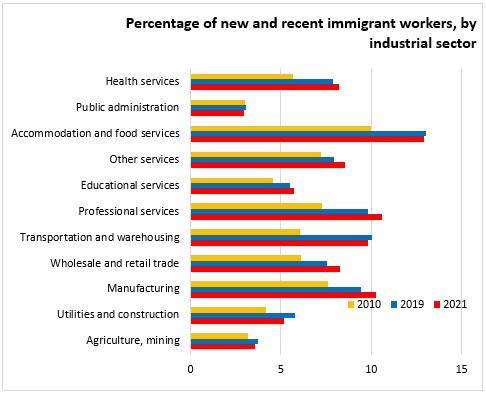
The percentage of workers in jobs requiring a university degree stayed close to 60% among young Canadian-born workers with at least a bachelor’s degree while the percentage of university educated immigrants in jobs requiring a university degree decreased from 46% to 38% among recent immigrants with a degree.
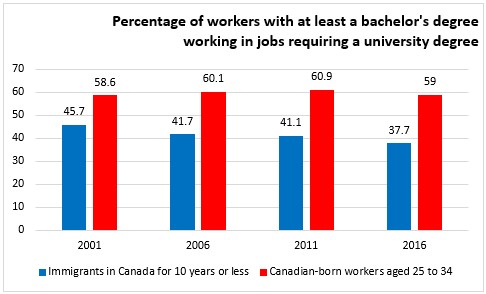
Recent immigrants’ employment rate grew 8 percentage points from 2010 to 2021 compared with 2 percentage points growth in the Canadian-born employment rate. The employment rate gap between new immigrant workers and Canadian-born workers declined from 13 percentage points in 2010 to 7 percentage points in 2021.
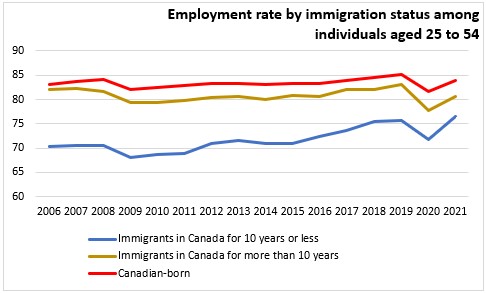
Earnings of economic immigrants in the first full year increased 39% between 2010 and 2018 entry cohorts, driving the trend of all new immigrants. Earnings of family class immigrants grew 27% and refugees grew 9%.
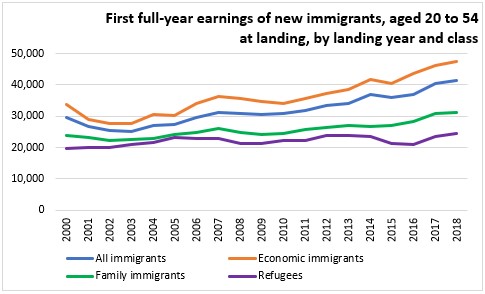
Among economic principal applicants who landed in 2020, around 67% worked in Canada before immigration, an increase from 12% in 2000 and 33% in 2010. This increase was related to the expansion of provincial programs that relied more on temporary foreign workers (TFWs) and the introduction of the Canadian Experience Class.
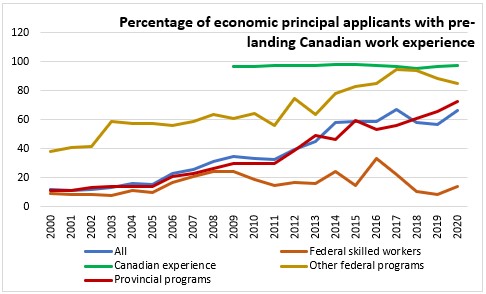
In 2019, TFWs accounted for 4.1% of the total T4 earners in Canada compared with 1.9% in 2010. The share of TFWs is higher in agriculture, accommodation and food services and administrative and support, waste remediation management services.

Higher-skilled TFWs have more pathways to apply for permanent residency but have a lower transition rate than lower-skilled TFWs.
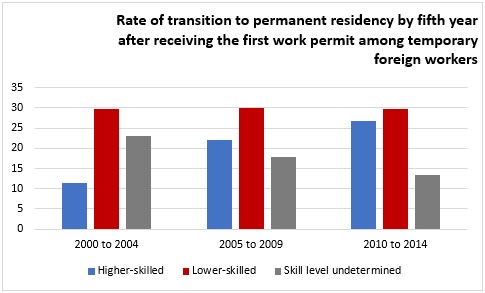
The number of international students with T4 earnings increased to 354,000 in 2019 from 22,000 in 2000. The increases were large at the non-university postsecondary level where the labour force participation rate rose from 7% to 58% and the number of participants rose from 3,000 to 173,000. The largest increase occurred after 2015.
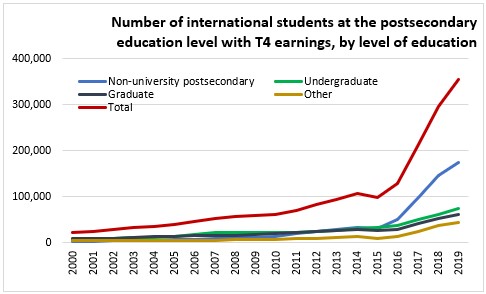
Among international students from 2000-2014, around one-third become permanent residents after 10 years. Transition rates are higher for students at the graduate level (50%) or with Canadian work experience (60%). A smaller portion of recent international students (2015-2019 cohort) are transitioning directly to permanent residents with more obtaining postgraduate work permits before transitioning to permanent residency.
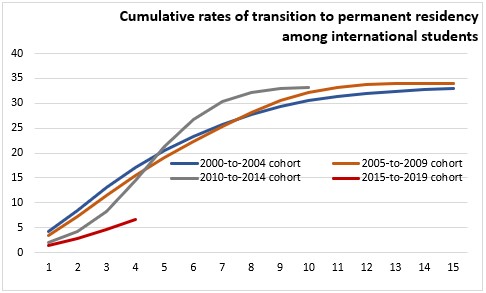
Source: Statistics Canada; Immigration as a source of labour supply, Research to Insights: Immigration as a Source of Labour Supply
<--- Return to Archive